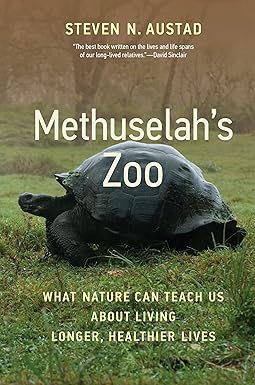By Steven N. Austad – The MIT Press, 2022
What do naked mole-rats, tubeworms, lake sturgeons and cockatoos have in common? Each species is a part of a group of animals with the highest longevity quotient— the life expectancy within a zoo or sanctuary of a specific animal species compared to other animal species of the same size. (For example, in a lab setting, a naked mole-rat lives 6.7 times longer than other small mammals.)
Steven Austad, a biologist from the University of Alabama at Birmingham, has dedicated his career to studying these spectacular species in the hopes of learning more about how humans can optimize the aging process. He takes readers on an educational journey about the science behind what makes each of these species unique, sharing the stories of Little Mama, the chimpanzee who supposedly lived to 79 years old, and Barbara the African elephant, who died at the estimated age of 72.
Many questions are still unanswered by the scientific community, like what makes certain species almost completely immune to developing cancer or how birds and bats live exceptionally long with minimal physical decline across their lifespan. There is so much more to learn about species that are aging more successfully than humans. The key to developing medical treatments that lead to longer lives may be right in front of our eyes. As Austad would say, “nature is endlessly inventive.” Animal lovers—and any reader curious about life—will not be able to put this one down.



